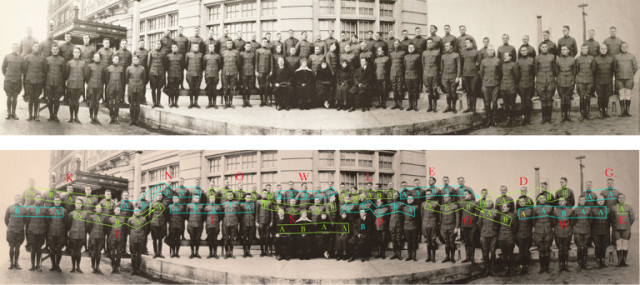Famous cryptographers’ tombstone cryptogram decrypted

This article was inspired by Elonka Dunin’s Schmoocon 2018 presentation about this fascinating topic.
Dunin’s original paper, Cipher on the William and Elizebeth Friedman tombstone at Arlington National Cemetery is solved, was published in April 2017.
Hat tip to Iain Thomson at The Register for writing up Dunin’s talk at Schmoocon.
William and Elizebeth Friedman were a husband-and-wife team who were amongst the very first US government cryptographers.
Their careers started just before the US entered World War One in 1917, and continued through and beyond World War Two.
William died in 1969; Elizebeth (apparently, her mother liked the name Elizabeth but but not Eliza, and chose the unusual spelling to prevent unwanted abbreviations) in 1980:
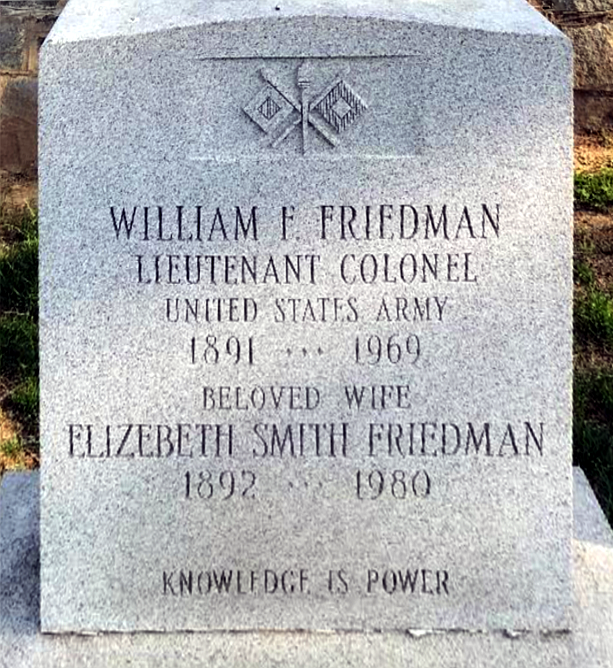
William was an army Colonel, so their joint tombstone is in the Arlington National Cemetery, just across the river from Washington DC, the capital of the United States.
Of course, the tombstone didn’t always look like the picture above – it was commissioned by Elizebeth after she was widowed; obviously, her name was added only after her death more than a decade later.
The phrase at the bottom, KNOWLEDGE IS POWER, was a favourite sayings of William’s, so much so that he encoded it into the graduation photograph of the army cryptography course that he and Elizebeth taught in 1918:
The code used here is what’s known as a Bacon cipher, essentially a 5-bit binary encoding of the letters of the alphabet:
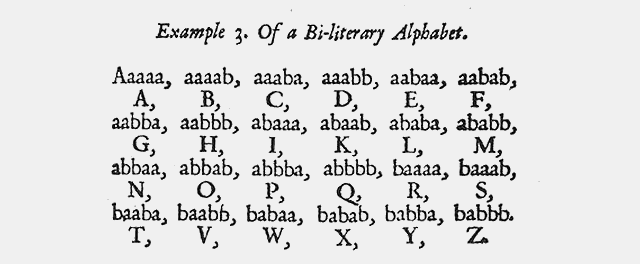
Bacon used A and B, but you can replace them with 0 and 1 and treat the codes as binary numbers.
Bacon’s idea was to hide the As and Bs (or zeros and ones) in regular printed text by using different faces, weights, styles or sizes for successive characters, or by other minor differences in a picture or diagram.
In the graduation photo above, the As and Bs were encoded by whether the person was looking directly at the camera, or to one side.
Below, however, I’ve done it by mixing mixed two typacefaces, American Typewriter (the one with the serifs, or flourishes, on each letter) and Arial Black (with clean edges and uniform stroke widths):
![]()
Marked up with colours, the differences are easier to see:
![]()
Spaced cleanly into fives, as required in the Bacon cipher, with black for Bacon’s Bs and red for the As, we can easily decode it:

Bacon redux
Guess what?
The Friedmans originally met and married when they were working together on a project to investigate the many historical claims that Shakespeare’s plays were written anonymously by some other author.
Sir Francis Bacon is one of the authors often proposed as “the real Shakespeare”, allegedly on the basis of messages left behind – in the Bacon cipher, of course – in contemporary texts.
But the Friedmans published a definitive book in 1957, entitled The Shakespearean Ciphers Examined: An analysis of cryptographic systems used as evidence that some author other than William Shakespeare wrote the plays commonly attributed to him.
The book pretty much settled the matter: the Baconian theory of Shakespearean authorship was debunked for ever.
Fast forward to the twenty-first century.
Elonka Dunin, a renowned video game creator and cryptographic historian, visited Arlington Cemetery to pay her respects at the Friedmans’ grave, and her attention was quite understandably drawn to the words at the bottom of the tombstone:

If you were Elizebeth, you’d have squeezed a cryptogram in there, wouldn’t you?
Look closely and you will see that some of the letters do not have serifs – the little strokes that are obvious on the strokes of letters such as K and G above – even though all the other writing on the tombstone is carved in a serif face.

With a bit of care (the letter O doesn’t have strokes, but is typically thinner at top and bottom in a serif face), you can make out a pattern on the tombstone:

The characters differences are subtle, at least in the low-resolution image here, but we agree with Dunin’s assessment of how this comes out:

Dunin found additional evidence that Elizebeth planned this all along, and thus that there is no wishful thinking here, thanks to an image found in the Elizebeth Smith Friedman collection:
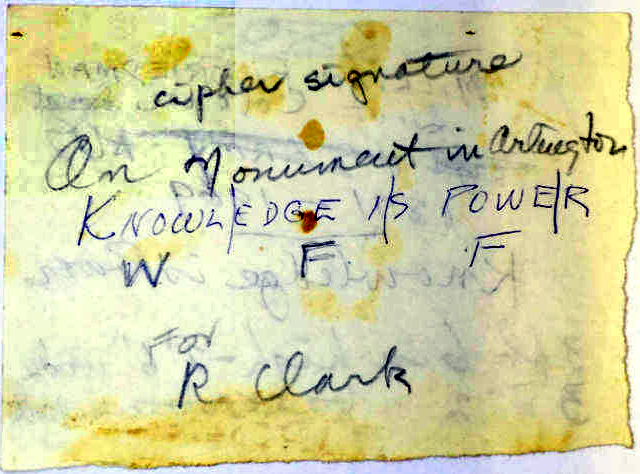
To make the image above a bit easier to read, we fiddled with the levels in the image, which is why it looks somewhat unnatural; however, that brought out some additional details.
Although the words KNOWLEDGE IS POWER have apparently been added in later in a different hand with what looks like a ballpoint pen, you can see that this paper note definitely relates to the tombstone design if you flip it over and read the other side:
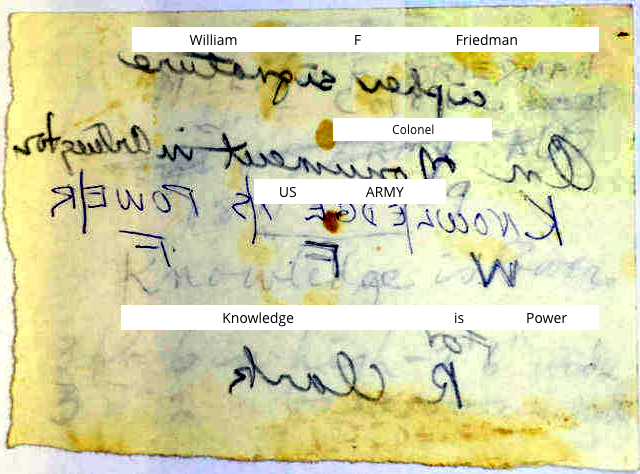
Knowledge is power, indeed.
What a splendid memento!
PS. Can you make out any more of the text on the other side of the note? You can use the colour-tweaked version we have here, or try your own enhancements of the original from Dunin’s paper. (We used GIMP’s Levels operator and did a Flip horizontally.) What about the numbers at the bottom? We think we can see 3 ft 6 in high and 3 [??] 2 [???] (presumably the width), but there’s more data there for the finding. Let us know what you think you’ve got!
Follow @NakedSecurity
Follow @duckblog
Article source: http://feedproxy.google.com/~r/nakedsecurity/~3/thDB27YqO78/
